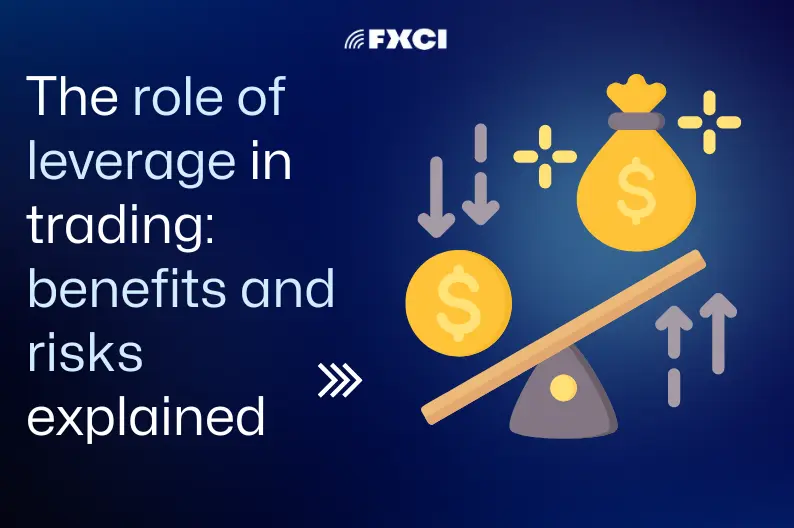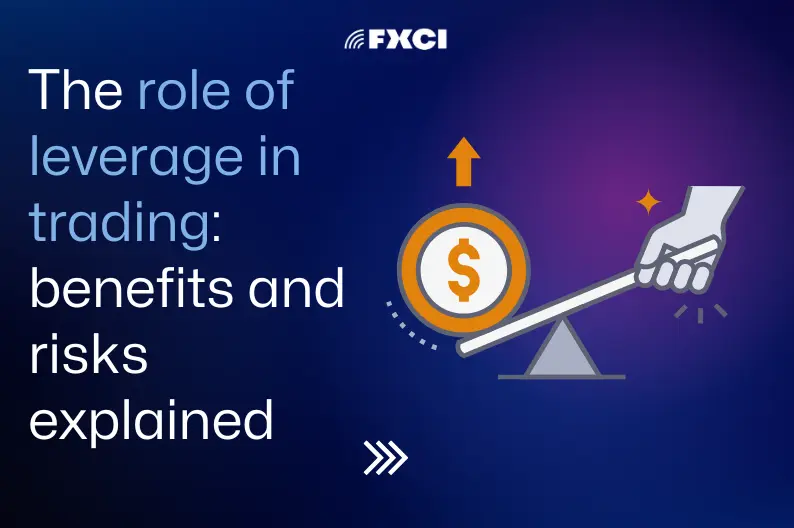
Investors trying to protect their money from market volatility at a time of ever-changing markets and erratic economic conditions now need to be proficient in risk management. Fearsome may be market volatility, which is typified by significant price swings and more uncertainty.
Still, investors can negotiate these difficult seas and safeguard their portfolios by using wise strategies and being proactive. Topics like risk management in tumultuous markets, offering perceptive analysis and intricate methods for shielding your investments from market volatility, become crucial for preserving and growing assets and wealth.
If you also want to learn how to protect your assets in highly volatile markets, the experts at FXCI have prepared some great material that outlines the best strategies for preserving capital in the most unpredictable market conditions.
Understanding Market Volatility
What are the factors that contribute to fluctuations in the stock market?
- Economic Factors: Various macroeconomic indicators, such as the growth of the gross domestic product, the rate of inflation, the level of unemployment, and the prevailing interest rates, can all impact the volatility of the stock market. Changes in the economy can greatly affect the profitability of businesses, the amount consumers spend, and the confidence of investors, leading to fluctuations in stock prices.
- News specific to a company: The release of corporate earnings, mergers and acquisitions, product launches, changes in management, and legal or regulatory events can all lead to fluctuations in specific stocks and sectors.
- Geopolitical events: Political instability, trade disputes, wars, terrorist attacks, and geopolitical conflicts have the potential to create uncertainty in financial markets and cause fluctuations in stock prices.
- Market Sentiment: Investors' sentiments, emotions, and the psychology of the market all play crucial roles in the fluctuation of stock market prices. An optimistic mindset has the power to create a sense of urgency in buying and boost prices' momentum.
Methods for Assessing Volatility in the Stock Market:
- Standard Deviation: Measures the spread or variation of a set of data points in relation to their mean or average value. When it comes to finance, measuring the volatility of stock prices is a common practice, and one of the most widely used methods is standard deviation. A higher level of variation suggests greater instability, while a lower level of variation suggests reduced instability.
- Beta Coefficient: Measures the level of sensitivity that a specific stock has towards changes in the overall market conditions. A beta greater than one suggests that the stock exhibits higher volatility compared to the market, whereas a beta lower than one suggests decreased volatility.
- VIX (CBOE Volatility Index): A widely recognized gauge of implied volatility within the stock market. It signifies the expectations of investors regarding potential fluctuations in the market, as indicated by the pricing of options. A higher VIX value suggests increased anticipated market volatility, while a lower VIX number signifies reduced projected volatility.
- Historical Volatility: A metric that quantifies the past level of volatility exhibited by a company or the entire market, utilizing price data as a basis for analysis. This provides details about the level of market volatility during a specific timeframe.
Considerations for investors:
- Portfolio Management: A deep understanding of stock market fluctuations is crucial to efficiently handle the risk associated with portfolio management and asset allocation. Investors may consider modifying their investment strategies, expanding the range of assets in their portfolios, or implementing risk management techniques to minimize the effects of market fluctuations on their investments.
- Trading Strategies: Highly dynamic markets offer opportunities for bold traders and investors. Traders who prefer shorter timeframes can capitalize on market fluctuations by employing momentum, swing, or day trading strategies.
- Managing Risk: Given the market's unpredictable nature, investors must carefully assess their comfort level with risk and align their investment goals accordingly. They should adopt a methodical strategy for managing risks, employ stop-loss orders, and refrain from making impulsive decisions influenced by temporary fluctuations in the market.
Psychological Aspects of Volatile Markets
Intense emotions like fear and greed hold immense sway over the results of trading. During times of intense fear, traders might succumb to panic and hastily dispose of their investments, apprehensive of incurring additional losses. Conversely, an insatiable desire for wealth can compel traders to cling to their positions for an extended period in the hopes of achieving even more substantial gains. Excessive apprehension and insatiable desire can obscure sound reasoning and hinder traders from making logical choices grounded in market analysis.
As an illustration, in the midst of a market decline, apprehension might prompt traders to divest their stocks at a deficit despite the anticipation of a forthcoming market recovery. Likewise, an insatiable desire for more can hinder traders from capitalizing on their gains at the appropriate time, resulting in overlooked chances.
Understanding and conquering emotional biases is crucial for achieving success in trading. Here are some suggestions to effectively handle emotions and make logical trading choices:
- Create a Trading Strategy: Crafting a meticulously detailed trading strategy can effectively minimize the impact of emotions. An effective plan should encompass both entry and exit points, strategies for managing risk, and guidelines for navigating unforeseen market fluctuations.
- Maintain Self-Control: Adhere to the trading strategy and steer clear of impulsive choices influenced by feelings. Carefully examine the market with an unbiased perspective and make well-informed choices that align with your strategic approach.
- Mitigate Risk: Properly mitigate risk by implementing sound risk management strategies, such as utilizing stop-loss orders and carefully determining position sizes. This can assist in safeguarding your investment and mitigating the psychological toll of potential setbacks.
Diversification
Expanding one's investment portfolio is a crucial approach to safeguarding assets in the face of market instability. This strategy entails allocating investments across various asset classes, including equities, fixed-income securities, and properties, while also diversifying within each asset class. The fundamental idea behind diversification is to reduce risk by spreading your financial resources across multiple investments or market sectors.
Diversifying your asset classes is essential, as they tend to respond distinctively to various economic occurrences. For example, during periods of stock market decline, bonds or real estate may demonstrate more robust performance, and vice versa. This equilibrium can assist in steadying your investment portfolio amidst market fluctuations.
- Considering diversification across different geographic regions is also crucial. Investing on a global scale can provide a safeguard against potential risks that may be tied to a particular country or region. For instance, even if the U.S. market is going through a period of decline, global markets may be flourishing, providing some protection against local market downturns.
- Expanding the Range of Asset Classes: To achieve optimal results, it is crucial to diversify within each asset class. In the stock market, diversification involves allocating investments across various industries (such as technology, healthcare, and energy) and investing in a combination of established and emerging companies. When it comes to bonds, there are different timeframes for maturity, varying levels of credit quality, and various types such as government, municipal, and corporate.
- Adjusting: Achieving optimal diversification necessitates periodic readjustment. Over time, the performance of various assets can alter the original asset allocation of the portfolio. Regularly readjusting your portfolio by either purchasing or selling assets is crucial for ensuring that it remains in line with your risk tolerance and investment objectives.
- Investors often find mutual funds and exchange-traded funds (ETFs) a convenient option for achieving diversification. These funds gather funds from numerous investors to purchase a diverse array of securities, offering immediate diversification that may be more challenging to accomplish on an individual basis.
Steps for diversifying an investment portfolio:
- Establishing Well-Defined Investment Objectives: Prior to delving into the subject, it is essential to establish your financial goals, your comfort level with risk, and the length of time you have to achieve those goals. Various objectives may necessitate varying degrees of risk and reward.
- Gain a Comprehensive Understanding of Different Types of Assets: Get to know different types of assets, such as stocks, bonds, real estate, commodities, and cash equivalents. Every class exhibits distinct behavior in response to market conditions.
- Distribute Among Different Types of Investments: Diversify your investments among various asset classes to minimize risk. Combining stocks, bonds, and alternative investments can effectively mitigate the impact of market fluctuations.
- Explore a Variety of Investments in Every Asset Category: For optimal diversification, distribute your investments within each asset class across a wide array of sectors, geographic areas, and investment approaches. For instance, in the context of equities, contemplate investing in various industries such as technology, healthcare, and consumer goods.
- Think About Global Investments: Consider diversifying your investments internationally to take advantage of growth opportunities in various countries and regions. This approach can also serve as a safeguard against risks specific to a particular region.
- Review and Modify Your Portfolio Regularly: It is important to consistently review your portfolio to confirm that it remains in line with your risk tolerance and investment objectives. Over time, it is essential to make adjustments to ensure your portfolio remains in line with your intended allocation.
- Utilize Diversified Funds: Contemplate utilizing mutual funds and exchange-traded funds (ETFs) to achieve instant diversification. These funds invest in a wide range of securities, providing a convenient and cost-effective way to diversify your portfolio.
Hedging and Defensive Investments
Hedging is a strategy to protect against financial risks. It involves making investments to counterbalance potential losses in another investment. Hedging can be achieved using various methods, such as options, futures, or other financial instruments.
Hedging Strategies:
- Options: Options provide the right, but not the obligation, to buy or sell an asset at a predetermined price before a specified date. This can limit potential losses or secure profits.
- Futures: Futures contracts require buying or selling an asset at a predetermined price on a future date. They are commonly used for hedging against price fluctuations in commodities and financial markets.
- Inverse ETFs: These funds aim to provide returns that are the opposite of the performance of a specific index or asset. They can serve as a hedging tool in declining markets.
- Stop-Loss Orders: A stop-loss order is an order to sell a security when it reaches a specific price. This helps limit losses by automatically selling the asset before it declines further.
Defensive Investments:
- Bonds: Bonds are fixed-income securities that provide regular interest payments and return the principal amount at maturity. They are generally considered less risky than stocks and can provide stability in a volatile market.
- Dividend Stocks: Dividend-paying stocks provide regular income through dividends, which can help offset market volatility. Companies with a history of stable dividends are often considered safer investments.
- Utilities and Consumer Staples: Companies in these sectors provide essential goods and services, which tend to be in demand regardless of economic conditions. They are often considered defensive investments.
- Cash and Cash Equivalents: Holding cash or cash equivalents, such as money market funds, provides liquidity and preserves capital. This can be a safe haven during periods of high market volatility.
Long-Term Investment Strategies
Volatile markets can be challenging, but long-term investment strategies can help mitigate risks and achieve financial goals. Here are some key strategies:
Buy and Hold:
The buy-and-hold strategy involves purchasing investments and holding them for an extended period, regardless of short-term market fluctuations. This approach is based on the belief that markets tend to rise over the long term.
Dollar-Cost Averaging:
This strategy involves investing a fixed amount of money at regular intervals, regardless of market conditions. It helps reduce the impact of market volatility by spreading out investments over time.
Value Investing:
Value investing involves identifying undervalued stocks with b fundamentals and holding them until their true value is recognized by the market. This approach requires thorough research and a long-term perspective.
Growth Investing:
Growth investing focuses on companies with high growth potential. While these investments can be more volatile, they offer the potential for significant long-term gains.
Rebalancing:
Rebalancing involves periodically adjusting your portfolio to maintain your desired asset allocation. This helps manage risk and ensures your investments remain aligned with your financial goals.
By adopting these strategies and staying disciplined, investors can navigate volatile markets and work towards achieving their long-term financial objectives.
Market Volatility Monitoring Tools
Conclusion
In conclusion, navigating volatile markets requires a combination of understanding market dynamics, managing psychological factors, diversifying investments, employing hedging and defensive strategies, and maintaining a long-term perspective. By adopting these strategies and remaining disciplined, investors can protect their investments and work towards achieving their financial goals even in uncertain market conditions.





